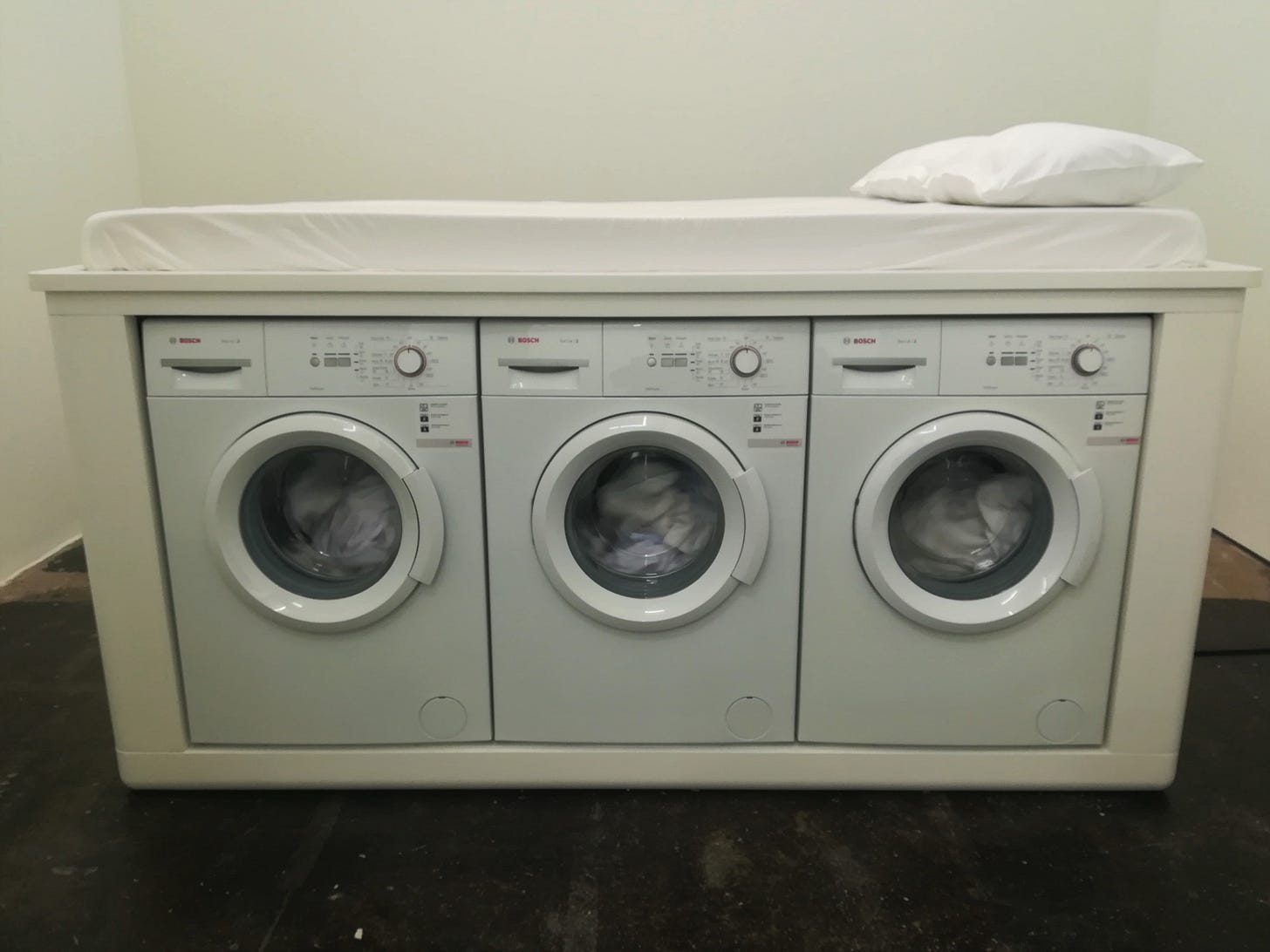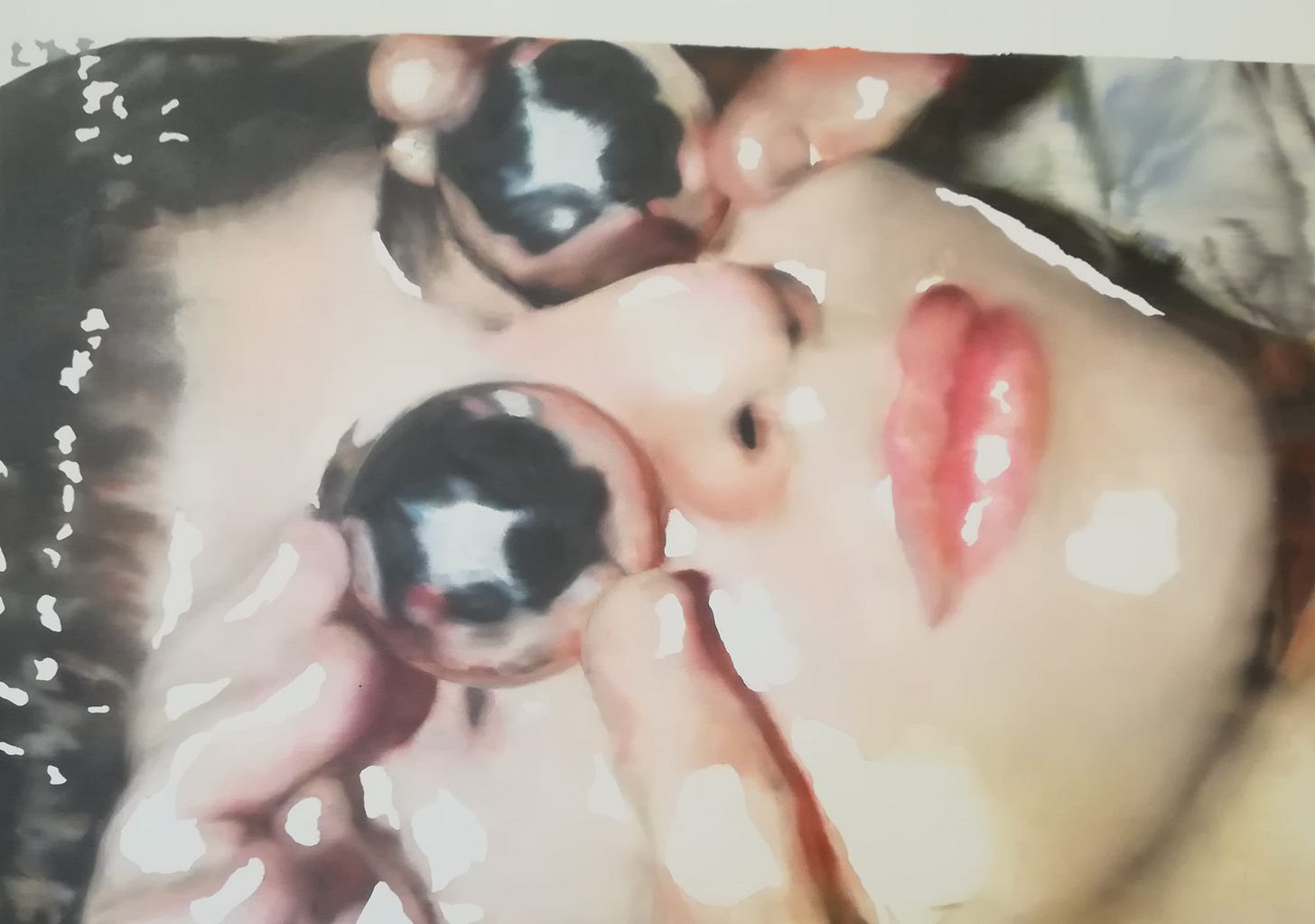Last week, I was still in Transylvania, visiting Brașov and its old city centre (cobbled stone streets and Baroque architecture), Bran and its fake “Dracula Castle” (many tourists, no vampires in sight), and Râșnov and its citadel, the renovation of which seemed half-abandoned (some facades were refurbished, but most walls were falling into ruin, and no work was actually being done - at 4pm on a Wednesday at least).
Because solo travelling is anything but a solitary pursuit, I had made a friend at the hostel upon my arrival in Brașov. We ended up spending several days together, exploring the region while discussing our grand plans for the future. In the marketplace at Bran, he got into his head the idea of possessing a pocket watch, after having spotted one in one of the market stalls. This idea rapidly took hold of him, occupying his whole attention, and after much discussion, he settled for one with a case in the shape of an owl. We decided it was Athena’s owl, a symbol of wisdom of which he would be reminded every time he wanted to check the time.
In the preface to The Philosophy of Right (1820), Hegel writes that :
“The owl of Minerva spreads its wings only with the coming of the dusk.”
“Die Eule der Minerva beginnt erst mit der einbrechenden Dämmerung ihren Flug.”
My owl spread its wings about a week later, as hindsight gave the rather timely incident of The Purchase of the Pocket Watch a special, metaphorical significance. Indeed, from that moment forward, time seems to have sped up and has been running out.
Up until then, I had been making my way around rather slowly. Three relaxing weeks in the North of Italy, a short rest in Ljubljana, a few weeks in Hungary, a journey into Romania. And then, suddenly, the urgency of my return became apparent. Last Sunday, 23rd October, I wrote to you from Bucharest (the furthest from France The Peripatetic Museum got to). Less than twenty-four hours later, I was in Munich, having travelled with two trains across approximately 1 500 km.
Sunday 23rd October. In the afternoon, I made my way from Bucharest back to Brașov, where I picked up the night train to Budapest at 8.22pm. After the bustle of the ticket control, and the hassle of making my bed and getting as comfortable as I could in such a cramped space (which was, actually, very comfortable indeed), I drifted off to sleep, rocked by the soft chugging of the train, rushing through an eerie night landscape shrouded in mist. I woke up the next morning as we were pulling into Budapest-Keleti - a train station I knew well, since I left for Eger from there. The Columbian backpacker covered in bed-bug bites, the American artist-cum-digital-nomad, and myself packed our bags in the narrow compartiment we had shared for over thirteen hours - and we were off, probably never to see each other again.
With the few forints I had leftover from my stay in Hungary, I got a train station coffee, and hopped onto the train to Munich. By the end of the day, I was in known territory (Germany), staying with a familiar face (a close friend from university). The following day, I moved on to Leipzig - a town I hadn’t been to since high school - and stayed with another friend whom I had met in Australia. After six weeks spent travelling further and further away from the familiarity of friends and home, I felt I was on my way back - and time had sped up and was running out.
Before I knew it, I was in Berlin (although a day later than expected : time flies, but I evidently don’t), following in the footsteps of artists whose work I had seen in Romania (remember Mihai Pop’s shoes in the MATCA Artspace in Cluj-Napoca ?). I headed to the Galeria Plan B. Founded in 2005 by Mihai Pop and Adrian Ghenie in Cluj, the gallery opened a second space in 2008 in the German capital, and at the moment, it is showing a solo exhibition of the Romanian artist Belu-Simion Făinaru (b. 1959 in Bucharest, currently living between Israel and Belgium), quite aptly entitled “Hold Infinity in the palm of your hand, And Eternity in an hour”. Unfortunately, I did not have Eternity to spend there, but rather a Thursday afternoon. Associate director Sorana Serban-Chiorean kindly acted as guide and mediator, walking me through the installations.
I stopped a while in front of You Have Always to Start Anew, which was first presented in the Romanian Pavilion of the Venice Biennale in 2019. In a small room, six washing machines, three on either side, are encased inside a cabinet. They are running continuously, white sheets spinning endlessly round and round, the room echoing with their regular humming. On top of the cabinet is a mattress covered with a sheet and pillows, constituting a makeshift bed. A closer look at the sheet reveals the poem Psalm (1961) by Romanian-German-Jewish Paul Celan, embroidered with white thread.
Belu-Simion Făinaru’s work touches upon Jewish-Romanian history and issues of identity and territory, while also addressing universal human themes, in this case the cyclicity of time, and the vulnerability of travel - imagine the discomfort of sleeping on top of running washing machines (although maybe it’s not that bad ? It maybe feels like the rattle of a night train…). In any case, I could relate to his work, in a rather superficial way perhaps. During these six weeks of travelling from place to place, I have experienced a certain feeling of uncertainty, wondering where I am going to sleep, how I am going to get my clothes washed, moving every few days from hostel to hostel, from a hotel, to a friend’s place, to someone’s couch. There are varying levels of comfort and of safety, there is always the unknown. I lost time watching those sheets spin in the washing machine - no, time is never lost. I spent time, then. Spending implies the notion of exchange - often monetary. Here, it involved an exchange of time for a transient aesthetic experience.
Belu-Simion Făinaru, You Have Always to Start Anew, 2019, Galeria Plan B, Berlin.
***
“In the back of my mind, there is always a clock ticking.”
A few hours had sped by and I was spending a Berlin evening with Luana Cloșcǎ, an artist whom I had discovered at the Biju Gallery in Cluj-Napoca. Along my ArtCrawl with Helga Thies, we had discussed her painting The allegory of the cave (2022), depicting a woman viewed from above, holding two reflective balls over her eyes - blinded, perhaps, by her exit from the cave and the discovery of a new reality - the Realm of Ideas. But what could she perceive through them ? The balls reflect a distorted vision of reality, but holding them thus over one’s eyes, one couldn’t see anything at all.
Luana Cloșcǎ, The Allegory of the Cave, 2022, Biju Gallery, Cluj-Napoca.
Luana Cloșcǎ has just moved to Berlin, where she has started her studies at the Universität der Künste Berlin (Berlin University of the Arts). After having worked for three years in close proximity with artists as a curator in Cluj, her “frustration” (as she puts it) of wanting to express her own ideas on art instead of conveying those of others led her to pursue her own artistic practice.
She talked about discovering the excitement and urgency of a capital city and artistic hub like Berlin. “In the back of my mind, there is always a clock ticking”, she said. And there are always things to do, places to explore, art to discover, vernissages to attend. With such an abundance of artistic offering and such limited time, there are choices to be made. But with which criteria ? One’s own taste ? Or rather, by training one's own discernment of what is relevant and what isn’t ? Quoting Marcel Duchamp, she says she “forces herself to contradict herself to avoid conforming to her own taste.” Surely, one wouldn’t need to choose without the constraint of time.
***
Indeed, time was still running out. It was Saturday and I had only one morning left in Berlin, before making my way to Worpswede… for a reason you shall read about next week. The link lies in the Neue Nationalgalerie, which I visited in the last few hours before my departure. The museum reopened in 2021, after being closed since 2015 for refurbishment, and now offers the visitor an impressive immersion into modern European art.
I remember from the exhibition Natalja Gontscharowa’s painting Die Uhr (1910), hanging in the room dedicated to the gallery Der Sturm (The Storm), a centre for artistic avant-garde which originated in Berlin. Born in 1881 in Russia, Gontscharowa was an avant-garde painter, sculptor, and stage designer. She emigrated to France in 1921 with her life-long partner Mikhail Larionov, and died in Paris in 1962.
In the exhibition, the proposed interpretation of Die Uhr reads :
“The message behind Gontscharowa’s painting Die Uhr (The Clock) should perhaps be attributed to [the] nascent development [of the representation of women artists in exhibitions] and the moment of recognition for women’s contributions to art that appeared to be rapidly approaching.”
(Although hindsight has definitely proven that moment to be approaching slowly rather than rapidly.)
At that moment, my interpretation was quite different. That clock completed the metaphorical significance of my friend’s pocket watch. The Roman numerals and the clock hands seem to be furiously spinning around, echoing the continuous spinning of Belu-Simion Făinaru’s washing machines, and conveying a sense of urgency which I am currently experiencing. Time has sped up and is running out.
Natalja Gontscharowa, Die Uhr, 1910, Neue Nationalgalerie, Berlin.
***
In the end, I unwillingly spent longer in Berlin than expected. The Deutsche Bahn (the national German railway company) functions with mysterious, esoteric clocks, not attuned to the human experience of time. The consequence of this is constant delays and train cancellations, as I experienced on Saturday afternoon. A train eventually left the station - not the one I had initially planned on taking but at least it went in the right direction.
But yesterday, the time change somehow gave me back the hour I had lost in the Berlin train station. That gift felt very special indeed… I have used it wisely, writing to you about running out of time. It is appropriate, then, to write off by thanking you for the time you spent reading me right to the end of this week’s piece.
ARTISTS
Belu-Simion Făinaru at Galeria Plan B
Luana Cloșcǎ : Instagram





